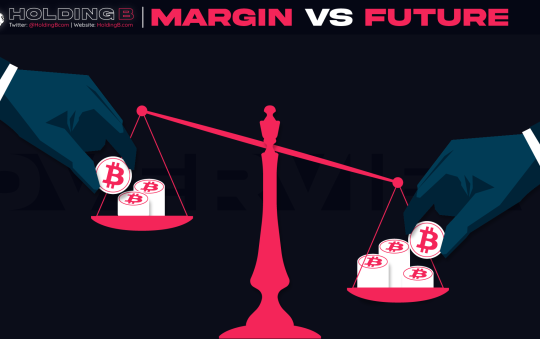Define
Margin trading is an advanced trading strategy that includes borrowing assets from a broker to make an investment. It lets the trader invest much more than they would usually be able to afford—even up to 100 times more, depending on the platform and what they offer—but it is also inherently riskier, as an unsuccessful trade will leave the trader liable for the total amount of the loss. In other words, if you trade at a margin of 50x, you can profit fifty times more than you would without that margin — but if you lose, you lose the entire amount you used for opening the trade.
This crypto trading strategy is most often used on assets with low volatility because it is much easier to predict the price movements and stay profitable. This means that the international forex market sees the most margin trading. However, it is also used when trading stocks, commodities, and even cryptocurrencies.
Basic Concepts in Margin Trading
Collateral is the minimum deposit needed to secure and repay a loan. The more collateral you put down, the more you can borrow.
Margin is the capital borrowed from a broker to purchase an investment. It is the difference between the total value of an investment and the loan amount.
Leverage is a measure of how much extra buying power you gain from borrowing funds to trade. It is usually expressed as a multiplier (2x, 3x, etc.)
Liquidation happens when your position is automatically closed because its unrealized value drops below your collateral. The liquidation ensures that you don’t lose more than your collateral; therefore, loans are at high risk of liquidation when there is too much borrowed and too little in collateral.
Pros and Cons
The biggest advantage of crypto margin trading is the profit potential it offers. Say, for example, that you go for 100x leverage. This means that, if your margin is 1 BTC and the trade is successful, your profit will be as if you invested 100 BTC. Of course, you don’t have to go for such a high amount—most margin trading platforms will let you choose the leverage amount you’re most comfortable with and work from there. This means that you, the trader, get to decide what leverage you want to use.
On the other hand, the biggest drawback is more or less the same. If your trade is unsuccessful and you end up losing funds, you still have to pay your broker back. If the loss goes too far, you risk losing everything you have. Of course, this is where stop-loss orders can rescue you—knowing how to use all the tools at your disposal is of utmost importance.
How Margin Trading (Usually) works?
The idea behind margin trading is actually quite simple: you borrow funds from an exchange or lending platform to invest more funds than you currently have in your account. That allows you to open larger positions than you could without the loan, maximizing your returns in case of profit or loss. In other words, you use borrowed funds to leverage your account balance, taking on extra risk for the possibility of a larger reward
This process may vary from one platform to another, but to do margin trading, you must usually provide an initial deposit to open a position called initial margin. In crypto exchanges or lending platforms, this capital is usually held by the platform as collateral. To keep your position open, you may also have to hold a certain amount of capital in your account. The amount you’re able to leverage depends on the rules imposed by the platform you use and your initial deposit, but in crypto markets, it can range from 2x to 100x the value of your unleveraged position.
Here is an example: with margin trading, you can buy $10,000 worth of Ethereum with only $5,000 (by borrowing 50% or leveraging 2:1 or 2x). That means you borrow the $5,000 you don’t have from a lender, be that an exchange or lending platform, to whom you may or not pay a fee (interest on the money borrowed). This increases your potential gain (e.g., 5% returns over $10,000 worth of ETH instead of only $5,000), but it also increases potential loss (e.g., 5% loss over $10,000 worth of ETH instead of $5,000). And if an interest fee is charged (this is usually the case), it will accumulate and be payable for as long as your position remains open.
One last aspect to take into account is how margin trading can affect transaction costs. When fees are charged over the full amount traded and not only the initial margin, your position can end up being liquidated because of your inability to cover transaction costs.
How to Start Crypto Margin Trading
To start crypto margin trading, you need to find a solid crypto margin trading platform. One of the best crypto margin trading platform’s on the market is Prime XBT. It also offers a demo account to let you become acquainted with the way the platform works before depositing real money. Besides, it has some of the lowest trading fees, a great selection of trading instruments, a copy-trading feature, and lets you trade with up to 100x leverage. Good luck and never invest more than what you can afford to lose!
Read more: How Liquid Staking Works in DeFi?
See ya in the next article !
Don’t forget to follow useful articles about Crypto Market from team Holding B !!!
- Telegram Channel: https://t.me/HoldingBcom
- Telegram Group: https://t.me/HoldingB
- Website: https://holdingb.com/
- Twitter: https://twitter.com/HoldingBcom
- Facebook: https://www.facebook.com/holdingbcom





